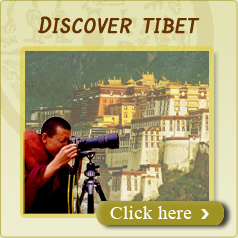Kumbum Stupa

Overview
Commissioned by one of the early Gyantse princes in 1427, the mystical Gyantse Kunbum (admission to which is included in the entry to Pelkor Chode) is rated by many as the town's foremost attraction. The chorten is packed with exquisite Tibetan sculpture and painting and rises 35m over four main symmetrical floors surmounted by a gold dome. The dome rises like a crown over four sets of eyes that gaze serenely out in the directions of the cardinal points. As you climb upwards through the chapels of the Kumbum you are drawn through progressively higher levels on the Tantric path.
A clockwise route leads murmuting pilgrims up through the six floors, taking in the 77 chapels that line the walls. There are two sets of four central chapels that extend to the floor above from the 1st and 3trd floors, and each of these is surrounded by smaller chapels in diminishing numbers and size as the floor ascend.
Know More
First Floor
This floor has four main chapels, oriented according to the cardinalpoints. These are dedicated to Sakyamuni (along with two disciples, medicine buddhas and Guru Rinpoche) in the south; Sukhavati, the 'Pure Land of the West' and home of red Opagme (Amitabha) in the west; Marmedze (Dipamkara, the Past Buddha) in the north; and Tushita (another 'Pure Land' and the home of Jampa) in the east. In between are some excellent murals depicting minor Tantric and protector deities. Murals of the Four Guardian Kings in the east lead the way to the upper floors.
Second Floor
The first four chapels in order clockwise from the stairs are dedicated to Jampelyang (Manjushri), Chenresig (Avalokiteshvara), Tsepame (Amitayus) and Drolma (Green Tara). Most of the other chapels are devoted to wrathful protector deities, while others include Drolma (White Tara; 12th chapel from the stairs), Chana Dorje (Vajrapani; 14th chapel) and Mikyoba Dorje (Akshobhya; 15th chapel), a blue buddha who holds a dorje (thunderbolt).
Third Floor
This floor is dominated by a second series of two-storey chapels at the cardinal points portraying the four Dhyani Buddhas-red Opagme (Amitabha) in the south, yellow Rinchen Jungne (Ratnasambhava) in the west, green Donyo Drupa (Amoghasiddhi) in the north and blue Mikyoba (Akshobhya) in the east. There are several other chapels devoted to the fifth Dhyani Buddha, white Namse (Vairocana). Again most of the other chapels are filled with wrathful deities.
Fouth Floor
The 11 chapels on this floor consist largely of teachers, interpreters and translators of obscure orders of Tibetan Buddhism. Exceptions include the Three Kings of Tibet (8th chapel clockwise from the steps) and Guru Rinpoche (10th chapel). You circumambulate this floor in a clockwise direction and find the passageway to the upper floors hidden behind the fourth statue in the eastern chapel - it's easy to miss in the gloom.
Upper Floor
The 5th floor, also known as the Bumpa, has four chapels and gives access to the roof. A pathway at the back of the floor leads up to the 6th floor and takes you out onto the veranda at the level of the eyes painted on the wall. From here there are great views of the town and monaster. There is also a series of murals painted around a central cube. The top floor portrays a Tantric manigestation of Sakyamuni (Sakya Thukpa), but you may find it locked.
Must see
Yamdrok Lake
The Yamdrok Lake (Tibetan: Yamdrok Yumtso) is one of the three largest lakes of Tibet, it is within Langkamu county, with an area of 638 square kilometers and a coastal line of 250 kilometers.
The deepest point is 60 metres. To the interior of the lake ten or so hilly islands stand independently one from the other which give homes to flocks of wild ducks...more
Dzong Fort
The 14th-century Gyantse Dzong Fort, is worth the stiff 20-minute climb to its upper limits. This is more for the amazing views of Gyantse, the monastery compound at the end of town and the surrounding Nyang-chu valley, than for what is left of the dzong itself, which is not much.
Some of the Dzong's buildings can be entered and explored, sometimes to upper floors, by means of rickety wooden ladders. About midway up through the fort complex is an Anti-British Imperialists Museum featuring a fabulously warped version of the 1904 British invasion. The displays start off with the predictable 'Tibet is an inalienable part of the motherland...'. Entry to the Dzong is via the large gate on the roundabout. You can also enter through the back way from Pelkor Rd via the alley marked 'Lane Castle' ...more
Pelkor Chode
Gyantse is notable for its magnificent Pelkor Chode, the largest Monastery in Tibet.
The Pelkor Chode was commissioned by a Gyantse prince and was an important centre of the Sakya school of Tibetan Buddhism.
The monastery compound in the far north of town of Gyantse, 30 km southwest of Shigatse, which houses both Pelkor Chode Monastery and the Kumbum Stupa, once contained 15 Monasteries. Little remains of them today. They were a particularly interesting collection, however, in that they brought together three different orders of Tibetan Buddhism in the one compound...more











